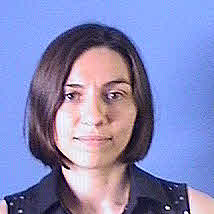Resident Supervision
The Residency Supervision Area is designed to assist hospitals and clinics with the protocols outlined for specific duties residents and fellows can perform. These guidelines are determined by the faculty of the University of Tennessee Health Science Center. Any questions about certain procedures not listed should be addressed to the faculty and not decided by the resident or fellow.
A credentialed and privileged attending physician ultimately provides supervision or oversight of each resident's patient care activities. Direct supervision by a qualified attending physician is required in the OR/Delivery Room or for non-routine invasive procedures like Cardiac Cath, Endoscopy, and Interventional Radiology. The standards for resident supervision in patient care settings are described in GME Policy #410.

Baiandurova, Anfisa - PGY - 5
Department of Pathology-Forensic
Resident Supervision
UTHSC Forensic Pathology Fellowship Supervision Policy
In the learning environment for forensic pathology, each decedent must have an identifiable, appropriately credentialed and privileged attending physician (or licensed independent practitioner as approved by each Review Committee) who is ultimately responsible for everything involving the decedent’s death investigation. This information should be available to fellows, faculty members, and other appropriate personnel. The program will provide the appropriate level of supervision for the fellows who evaluate the decedents. The responsibilities for each fellow and level of supervision will be based on severity and complexity of the death investigation case including autopsy, scene investigation, toxicology interpretation, available support services and fellow education and experiences.
There are three levels of supervision to ensure oversight of fellows and graded authority and responsibility:
1. Direct Supervision: the supervising physician is physically present with the fellow. With direct supervision, the supervising physician is physically within the hospital or other site and is immediately available to provide direct supervision.
2. Indirect Supervision: with indirect supervision, the supervising physician is not physically within the hospital or other site but is immediately available by means of telephonic and/or electronic modalities.
3. Oversight: the supervising physician is available to provide review of procedures/encounters with feedback provided after care is delivered.
Faculty lines of responsibility:
The privilege of progressive authority and responsibility, conditional independence, and a supervisory role delegated to each fellow is determined by the program director and faculty members. Faculty members functioning as supervising physicians should delegate portions of care to fellows, based on the complexity of the case, likelihood of court involvement and the skills of the fellows. Faculty supervision assignments should be of a sufficient duration to assess the knowledge and skills of each fellow and delegate to him/her the appropriate level of authority and responsibility. The faculty member is ultimately responsible for the final autopsy reports, autopsy examinations, ordering and interpreting laboratory studies and consults, and scene visits of the fellow. The faculty member is required to be available for court testimony in all cases performed with the fellow.
Fellow lines of responsibility:
Fellows should serve in a supervisory role of residents or students in recognition of their progress toward independence, based on the needs of each decedent and the skills of the individual fellow. A fellow should know the limits of his/her scope of authority, and the circumstances under which he/she is permitted to act with conditional independence. The program director and faculty will evaluate the fellow’s abilities based on specific criteria. When available, evaluation should be guided by specific national standards-based criteria.
Forensic Pathology Fellowship – Clinical Skills Chart
All supervision is provided by faculty forensic pathologists.
|
Forensic Pathology Fellowship Program |
PGY4* |
PGY5 |
|
Forensic Pathology Fellows can perform the following procedures with indirect supervision: |
|
|
|
Review of the available medical history and circumstances of death |
X |
X |
|
Forensic Pathology Fellows can perform the following procedures with indirect supervision with direct supervision available: |
|
|
|
On call case triage and scene visits for the first 6 months |
X |
X |
|
Pediatric autopsy including external exam and internal exam |
X |
X |
|
Forensic Pathology Fellows can perform the following procedures with indirect supervision with direct supervision immediately available: |
|
|
|
External examination for remaining on site rotations |
X |
X |
|
Internal dissection and examination during autopsy for remaining on site rotations |
X |
X |
|
Forensic Pathology Fellows can perform the following procedures with oversight: |
|
|
|
On call case triage and scene visits for the second 6 months |
X |
X |
|
Photographic documentation of injuries and disease processes |
X |
X |
|
Review of microscopic and laboratory findings |
X |
X |
|
Preparation of written descriptions of the gross and microscopic findings |
X |
X |
|
Development of an opinion regarding the immediate, intermediate, and underlying (proximate) cause(s) of death |
X |
X |
|
Forensic Pathology Fellows can perform the following procedures with oversight with indirect supervision available: |
|
|
|
Postmortem radiology |
X |
X |
|
Forensic Pathology Fellows can perform the following procedures with direct supervision: |
|
|
|
External examination for the first 4 weeks |
X |
X |
|
Internal dissection and examination during autopsy for the first 4 weeks |
X |
X |
|
Autopsy of suspicious deaths |
X |
X |
|
Homicide autopsy |
X |
X |
|
Special procedures (neck dissection, pelvic exenteration, musculoskeletal dissection, etc. |
X |
X |
|
Review of the autopsy report with a member of the family |
X |
X |
|
Forensic Pathology Fellows must contact the on-call faculty member or program director: |
|
|
|
Mass fatality |
X |
X |
|
Dental, radiologic, fingerprint, DNA or presumptive identification of unidentified individuals |
X |
X |
*Assumes the Forensic Pathology Fellow successfully completed a three-year pathology residency program and was AP only.
